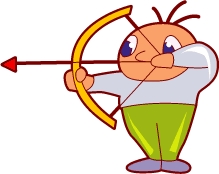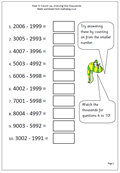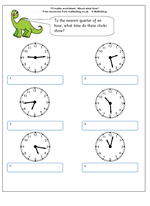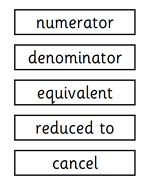Dispatches Part 1 Kid’s Don’t Count
This two part special asks how and why we seem to be failing our young children when it comes to maths.
One fifth of children are leaving primary school without basic skills and far too many children dislike maths. The programme also questions the maths ability of the teachers.
The average 8 year old should be able to work out a question such as half plus a quarter. Many can’t.
Dispatches follows a class of final-year pupils at Barton Hill Primary School in Bristol as their staff adopt a radical approach to teaching, in a bid to improve the maths ability of these children before they head off to secondary school.
The blank looks on the children’s faces in the programme showed that they had no idea how to answer the questions. So why were they being asked these questions when they should have been working on a task they could achieve?
Much goes wrong very early in school, from Reception on, when children are moved on too fast, don’t grasp the basics and are lost from that point on. They don’t know basic number bonds such as 4 + 6, they don’t understand the value of the digit 1 in 15. Yet suddenly they are being asked to add 40 and 60! This is especially true of children who come into school with poor language skills. The best thing a parent can do is talk to their children.
Many teachers think that because they have taught a child something that the child has understood and learned it. Too often the planning says they have to move on, regardless of the needs of the children. So move on they do; the teacher, that is, not the child!
By the time children reach Year 3 they know so little they are really beginning to fail.
Many teachers’ own maths is weak, and like most of us, resort to old methods they went through themselves, even though those methods failed them.
Often it is teachers who don’t like maths who make it most difficult for the children, by not allowing them to use practical apparatus, or fingers to help count.
Intervention programmes usually work over the short term, it is more difficult to keep it up. Part two will be interesting!
 A great way to practice the 2x, 5x and 10x tables is with 2p, 5p and 10p coins. If you can gather together a set of ten of each this makes for a really good practical resource with endless questions: e.g. I have six 5p coins, how much do I have? Give me 20p all in 5p coins etc. We will publishing a worksheet which gives further ideas next week.
A great way to practice the 2x, 5x and 10x tables is with 2p, 5p and 10p coins. If you can gather together a set of ten of each this makes for a really good practical resource with endless questions: e.g. I have six 5p coins, how much do I have? Give me 20p all in 5p coins etc. We will publishing a worksheet which gives further ideas next week.
 Next week the emphasis is firmly on multiplication. To begin with we have a worksheet on the order in which we carry out a calculation. If a question involves both multiplication and addition then the convention is that the multiplication should be carried out first, then the addition.
Next week the emphasis is firmly on multiplication. To begin with we have a worksheet on the order in which we carry out a calculation. If a question involves both multiplication and addition then the convention is that the multiplication should be carried out first, then the addition.




